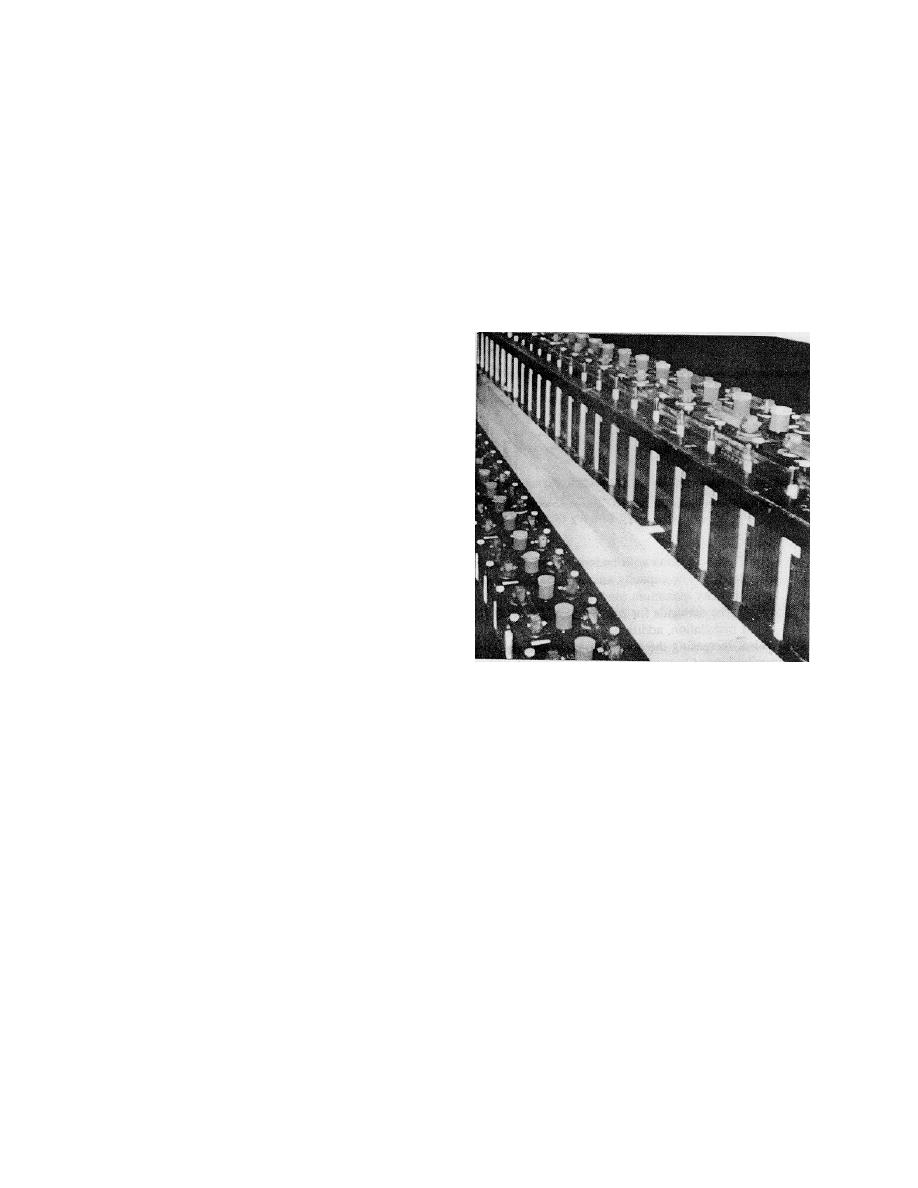
ETL 1110-2-533
30 Sep 94
protection or operation of the dam. Also, the role of
(3) The battery restraints in Figure B-4 are
some of these systems may be different than charac-
anchored with two 3/8-in. bolts at each end. Even if
terized here.
the anchorage does not fail, motion in the transverse
direction would cause significant deformation in the
long, end-supported lateral rail restraint. This would
B-4. Systems Needed for the Protection and
allow the batteries to impact the opposite rail when
Safe Shutdown of Dams
the motion reverses direction. Impacting can crack
battery cases causing an acid spill or loss of power.
The malfunction of any of the systems listed below
Rail supports should be provided every three to four
may cause severe damage to or interfere with the safe
cells to ensure both strength and stiffness of the
shutdown of the system. In some cases, additional
restraints.
systems may be needed for the protection or safe
shutdown of the dam, depending on how the dam's
systems are configured. Some of the seismic vulnera-
bilities of these systems will be discussed along with
mitigation measures.
a. Emergency batteries and emergency power
for monitoring, control, and other systems.
(1) The loss of power for system monitoring and
control can have disastrous consequences. In the
event of a significant earthquake, it is likely that there
will be a loss of power grid connections, even if there
are no problems at the damsite itself. Dams have
several sources of house power, including power from
the main turbines, house power turbines, or a separate
external line from the power grid. Emergency
sources of power may include an engine generator
and one or more sets of emergency batteries (gener-
ally, each set for a specific purpose) with chargers
and inverters. A given site may not have all of these
power sources available.
Figure B-4. Inadequate battery restraints
(2) Emergency batteries are a key element in
(4) When batteries are unanchored, the need for
power system facilities. Failure of the batteries or
anchorage is obvious. It is important to check situa-
ancillary equipment may cause a short circuit so that
tions where restraints and anchorage are present, but
station and emergency power may be disrupted,
are inadequate. More stringent design criteria for
which may cause a total loss of system control.
batteries, as compared with other parts of the system,
Emergency batteries should be secured. Because of
should be considered because of their importance to
the weight of batteries, from 30 to 200 lb per cell,
the operation and safety of the facility, and the fact
substantial racks that are well anchored must be pro-
that the incremental cost of conservative design is
vided. Battery restraints should prevent batteries
small.
from falling off of the sides and end of the rack.
Ideally, the lateral restraint should be positioned
(5) Inverters and chargers should be well
about the center of gravity of the cells and should fit
anchored, and the load path to the base for heavy
close to the battery case. Stiff spacers should also be
internal components, such as transformers, should be
placed between cells to prevent cell cases from
checked. Units have been found in which internal
impacting each other and from longitudinal motions
support of the transformers was inadequate or details
loading battery cell terminals. Dense polyurethane
of the base anchorage lacked strength or stiffness.
foam is often used.
B-5



 Previous Page
Previous Page
